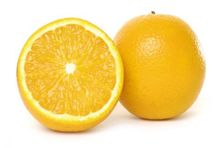In daily life, bumps, scrapes, and bleeding are inevitable, but in traditional views, going to the hospital for treatment seems like a big deal. So, many times, people either ignore the pain or self-medicate with some alcohol or a band-aid. In today’s society, where progress and living standards are continuously improving, treating oneself in such a perfunctory manner seems a bit careless. Today, let’s learn a bit more about the injuries we encounter in daily life and how to care for ourselves better, in a simple and understandable way. Let’s get started.


Let’s get straight to the point. First, let’s understand how bumps and scrapes injure the human body. After an injury, the affected area produces a large number of reactive oxygen species (ROS) due to physical and chemical actions. These ROS increase capillary permeability, damage endothelial cells, which are not only the target cells for ROS attacks but also important tissues for ROS production. When endothelial cells are damaged, their normal physiological functions are affected, leading to ischemia, edema, and hypoxia in adjacent tissues, causing extensive cell death and a series of secondary injuries, resulting in endothelial dysfunction. If we ignore the injury, ROS will continue to be produced in large quantities, and endothelial cells will not be repaired, gradually affecting our body. This not only impacts our daily life, work, and study but can also lead to aesthetic issues. At this point, our main character enters the scene: our small but mighty Vitamin C.
Vitamin C (Vitamin C, Ascorbic Acid), also known as L-ascorbic acid, is one of the essential trace nutrients for the human body. It has various physiological functions, including antioxidant properties, involvement in collagen synthesis, treatment and prevention of scurvy, prevention of arteriosclerosis, treatment of anemia, and cancer prevention. In addition, Vitamin C can promote the formation of antibodies in the body, enhance the phagocytic ability of white blood cells, improve resistance to diseases, and increase tolerance to cold. Vitamin C participates in amino acid metabolism, neurotransmitter synthesis, collagen, and the synthesis of interstitial tissues, promotes iron absorption in the intestine, lowers blood lipids, reduces capillary permeability and fragility, accelerates blood clotting, stimulates coagulation function, reduces pain, decreases tissue permeability, and promotes wound healing, increasing resistance to infections.
Most animals can synthesize Vitamin C in large amounts, but humans lost this ability during evolution. Vitamin C is a polar macromolecule that cannot pass through cell membranes by simple diffusion; instead, it is facilitated through glucose transporters (Facilitative glucose transporters, GLUT) and sodium-dependent vitamin C transporters (sodium vitamin C transporters, SVCT). Humans mainly obtain Vitamin C from their diet through these specific transporters, but due to the low expression level, saturation, and feedback inhibition of the Vitamin C transporters, even though it is abundant in various fresh fruits and vegetables, the effective concentration of Vitamin C in human blood usually remains at a relatively low level. A sharp decline in Vitamin C concentration in the blood can lead to a decrease in the body’s antioxidant capacity, resulting in the accumulation of reactive oxygen species (ROS). This phenomenon, if it occurs in the elderly or patients with progressive diseases (such as cancer, cardiovascular diseases, etc.), can accelerate disease progression.
Vitamin C deficiency can also lead to metabolic disorders of collagen fibers and intercellular adhesion substances as well as chondroitin sulfate, making it difficult for granulation tissue and blood vessel walls to regenerate, delaying wound healing and affecting bone development. As early as the 16th century, oranges and lemons were used in folk medicine to treat scurvy. Later, people isolated crystalline Vitamin C from vegetables and lemon juice, clarifying its chemical structure. In 1993, scientists successfully synthesized Vitamin C artificially, marking a new era in Vitamin C treatment for diseases.

Researchers observed the protective effects of Vitamin C against oxidative damage to endothelial cells induced by H2O2 through experiments involving a normal control group, H2O2 damage control group, and low, medium, and high concentration Vitamin C groups (VC—L+H2O2, VC—M+H2O2, VC—H+H2O2), concluding that Vitamin C promotes the restoration of morphology in oxidatively damaged endothelial cells, maintains or increases cell viability, preserves cell morphology, promotes cell growth, and the effect improves with higher doses.
Therefore, besides applying alcohol or sticking a band-aid, we can also love ourselves a bit more by taking Vitamin C. This small Vitamin C has such a significant effect, so should we take more of it? The answer is no. There are dosage requirements for taking Vitamin C. Research has found that long-term intake of Vitamin C above 4g can lead to the following situations: ① Long-term high-dose Vitamin C may cause a sharp increase in oxalate in urine, leading to the formation of oxalate stones; ② As a strong reducing agent, it can increase the levels of oxalate in blood and urine, causing sudden gout attacks; ③ Pregnant women taking large amounts of Vitamin C can lead to scurvy in their offspring, and large doses after birth can also lead to scurvy; ④ The strong reducing effect of Vitamin C can cause false-positive reactions in stool occult blood tests and often lead to abdominal pain and diarrhea; ⑤ Children taking large amounts of Vitamin C are prone to bone diseases, and high concentrations of intravenous Vitamin C can cause hemolytic reactions. Generally, it is recommended to keep the dosage of Vitamin C below 2g. Although Vitamin C is beneficial, we should not overconsume it.
References: [1] Wang Xianfeng, Liang Nan, Zhang Xiao. Clinical Application Progress of Vitamin C in Wound Healing [J]. Southwest Military Medicine, 2007, 9(2): 79-80.
[2] Katherine J. Desnevesa, Bree E. Todomvicb, Ann Cassara and Timothy C. Croweb, Treatment with supplementary arginine, vitamin C and Zinc in patients with pressure ulcers: A randomised controlled trial. [J] Clinical Nutrition, 2005, 24(6): 979-987.
[3] Zhang Lixin, Gao Zhixing. The Impact of High-Dose Vitamin C on Cellular Immune Function in Irritable Bowel Syndrome [J]. Shandong Medical Journal, 2012, 52(1): 90-91.
[4] Anderson R, Hay I, Van Wyk H, et al. The effect of ascorbate on cellular humoral immunity in asthmatic children [J]. S Afr Med J, 1980, 58(24): 974-977.
[5] Sun Xiuchuan. The Effect of Vitamin C on Immune Function [J]. Inner Mongolia Medical Journal, 2014, 46(2): 174-176.
[6] Liu Fenghua, Guo Huijuan, Wang Li. Pharmacology and Clinical Application of Vitamin C [J]. Asia-Pacific Traditional Medicine, 2021, 6(3): 89-90.
[7] Fan Wentao. Clinical Application of Vitamin C [J]. China Medical Guide, 2008, 16(6): 646-647.
[8] Zeng Xiangyun. Physiological Functions and Dietary Guarantees of Vitamin C [J]. China Food and Nutrition, 2005, 4: 52-54.
[9] Nagel E, Meyer Z, Vilsendorf A, et al. Antioxidative vitamins in prevention of ischemia/reperfusion injury [J]. Int J Vit Nutr Rev, 1997, 67(5): 298.
[10] Wang Xuan, Lu Zhengli, et al. The Protective Effects of Vitamin C and E on Oxidative Damage in Endothelial Cells In Vitro [J]. Tianjin Medical University Journal, 2005, 11(2): 187-189.
[11] Kearus SR, Daly AF, Shehan K, et al. Oral vitamin C reduces the injury to skeletal muscle caused by compartment syndrome. J Bone Joint Surg (Br). 2004, 86: 906.





